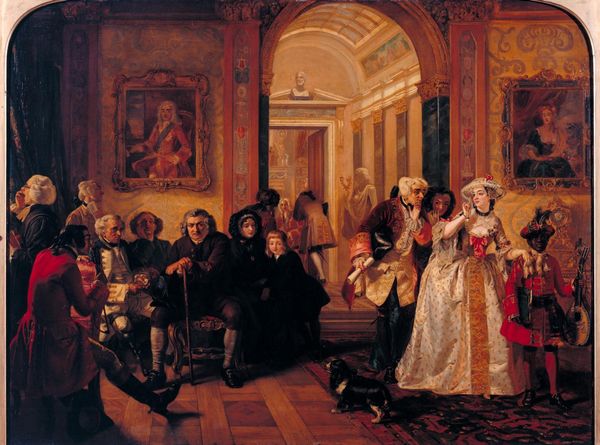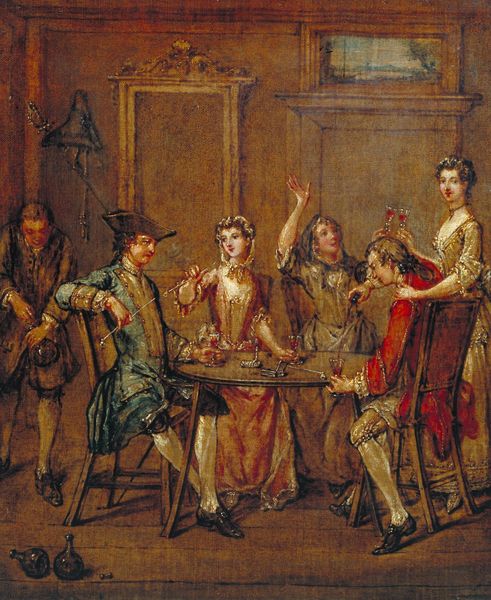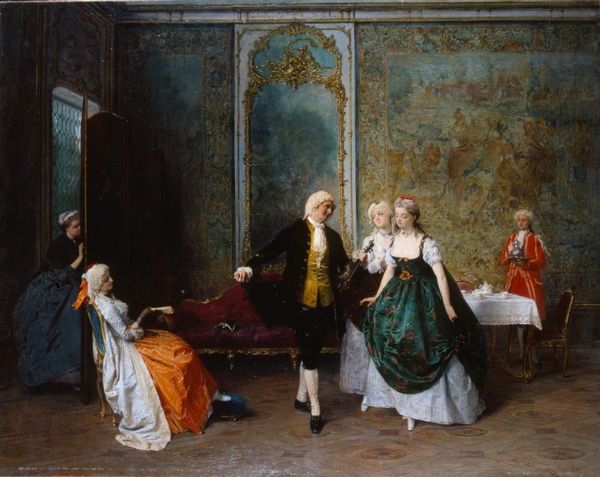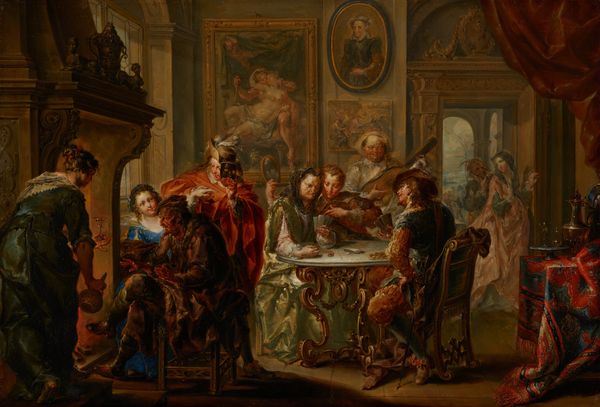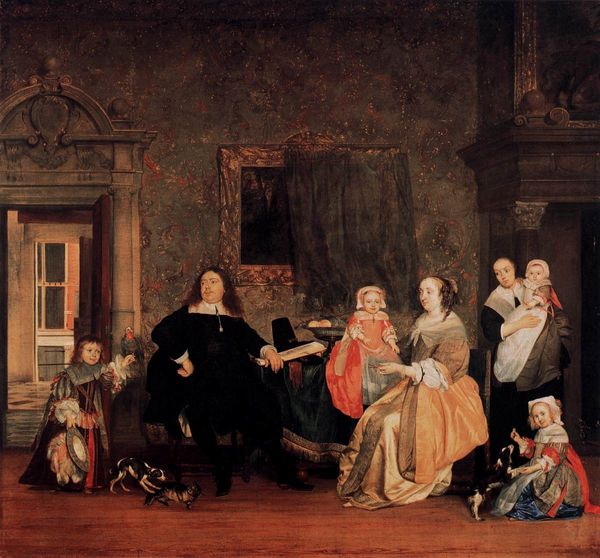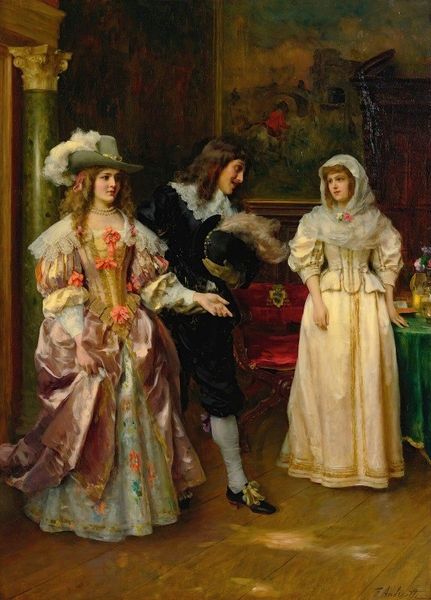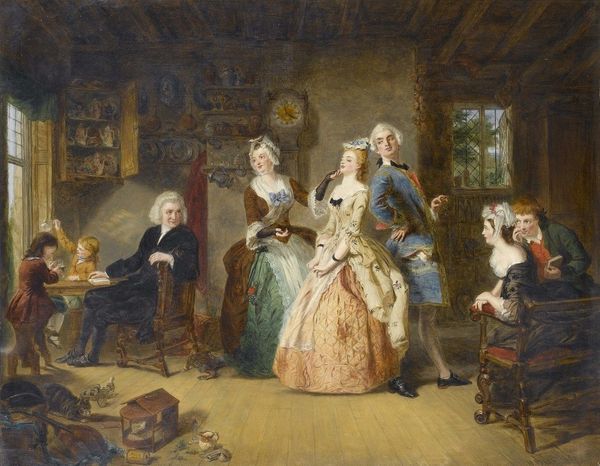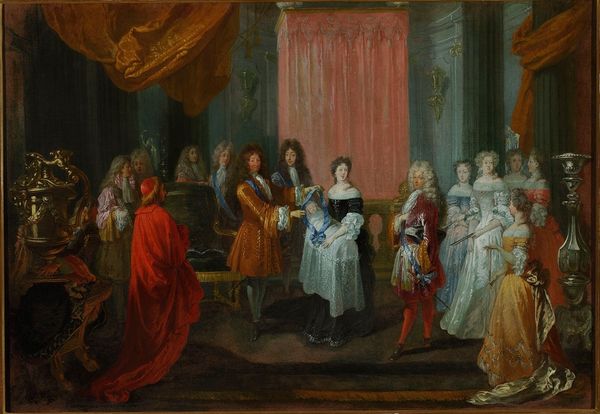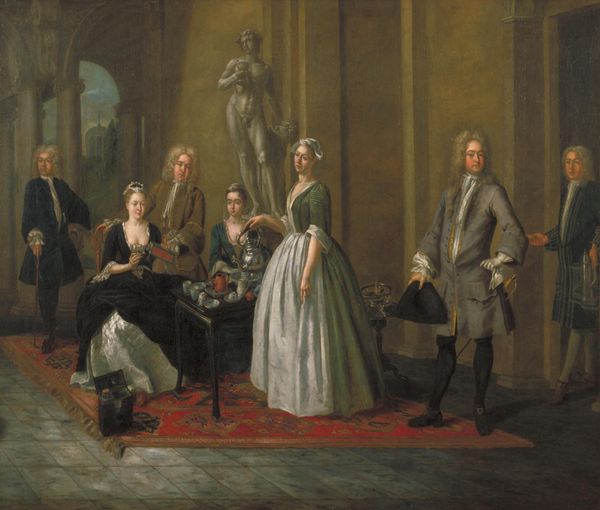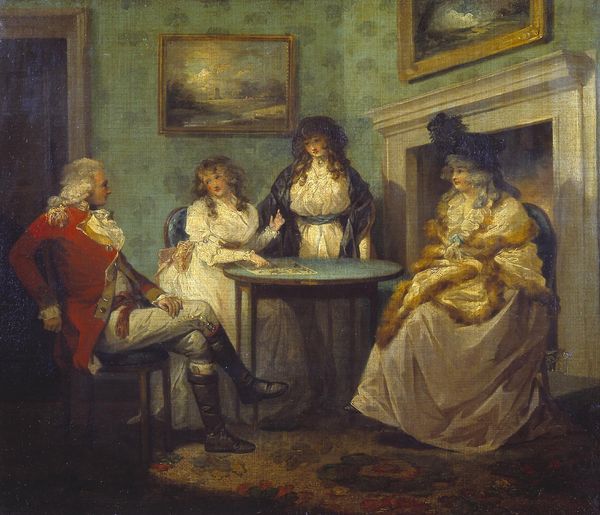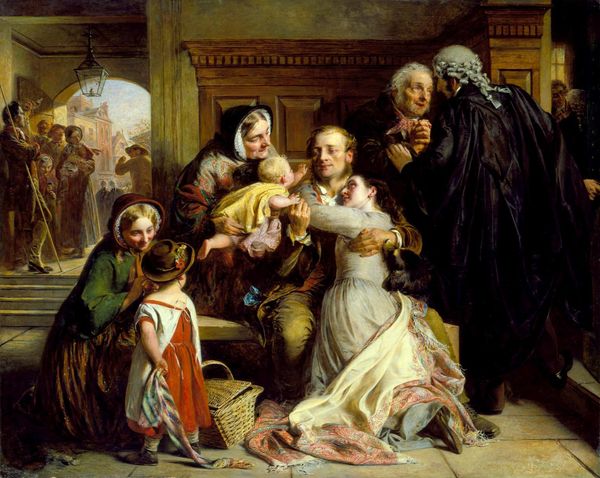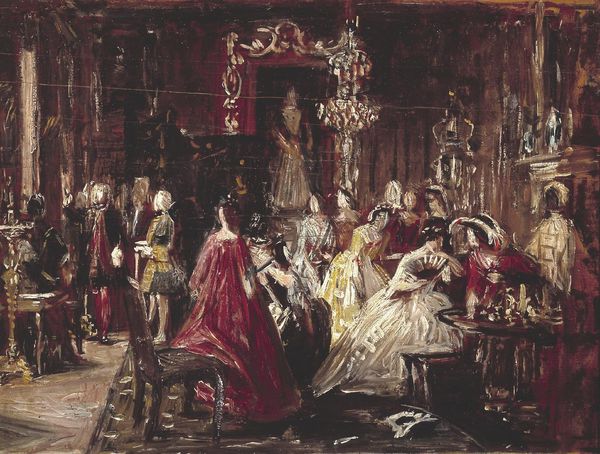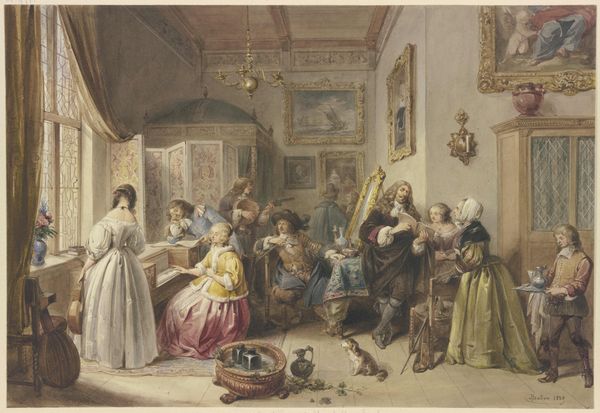
oil-paint
#
portrait
#
gouache
#
narrative-art
#
baroque
#
oil-paint
#
figuration
#
oil painting
#
group-portraits
#
genre-painting
#
history-painting
#
watercolor
Copyright: Public domain
Curator: Jean Leon Gerome Ferris gives us his imagined scene of "The Birth of Pennsylvania, 1680." It looks like an oil painting on canvas and centers on a lavishly dressed group of men receiving some kind of decree or grant of land. What stands out to you right away? Editor: Opulence. It feels weighty, laden with the signs of wealth. Look at those fabrics, the chandelier. There’s an interesting tension for me though. While it celebrates a “birth,” it does so within an overwhelmingly colonial and exclusionary setting. Where are the indigenous people in this "birth"? Curator: Indeed, Ferris’s work, while intending to depict an important moment in the history of Pennsylvania, inevitably frames it within a very specific European perspective. Note the almost theatrical arrangement of the figures. It recalls history paintings common in the 19th century, aiming to ennoble the past, and instruct the viewer about national virtues and events. Editor: It's also a masterclass in the visual language of power. The man seated is clearly the focal point; his body language speaks of authority while the document presented underscores legal entitlement. That power, however, rests on systemic dispossession. The visual splendor can’t mask that. How do you interpret the artist’s choice of this kind of grand staging? Curator: Well, Ferris was very popular for historical scenes like this that promoted an almost celebratory, heroic narrative of American history. But placing the scene within such a clearly opulent setting, highlights not only the achievement but also the structures of patronage that underpinned colonial expansion. In this sense, it provides fertile ground to reassess narratives, doesn't it? Editor: Absolutely. Seeing those luxurious details forces a reevaluation of the very foundations of power, land ownership, and legacy. By centering it around such material wealth, we are encouraged to ask tougher questions about cost, exclusion and ultimately, historical injustice. It demands critical engagement rather than simple celebration. Curator: Yes, even when it ostensibly appears as just a beautiful oil painting portraying history, art functions as an invitation to reconsider history, culture, and social justice issues that still have contemporary relevance today. Editor: I agree, by acknowledging historical biases and the complicated dynamics behind iconic scenes we transform passive observation into an act of empowered critical consciousness.
Comments
No comments
Be the first to comment and join the conversation on the ultimate creative platform.
